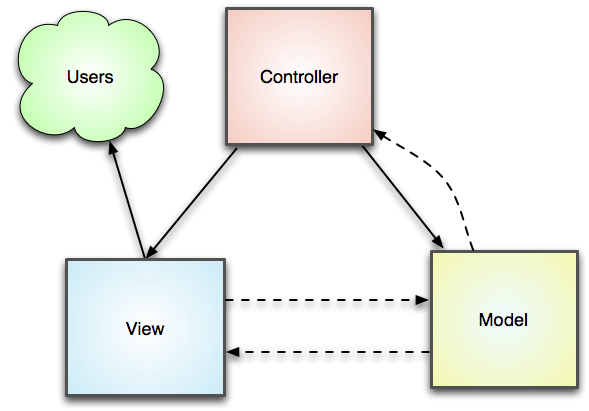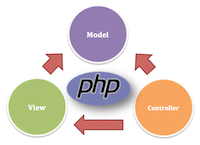PHP, FRAMEWORKS
PHP is a web programming language originally designed for producing dynamic web pages. Vincenc Technologies used PHP server-side scripting for standalone graphical applications. It is considered to be free software because it is an open source. This feature is a help to provide user affordable web sites. That’s why Vincenc Technologies uses PHP website programming as a web development techniques.
Frameworks
Model-View-Controller
So what exactly is this MVC pattern everyone keeps talking about, and why should you care? MVC is much more than just a three-letter acronym (TLA) that you can whip out anytime you want to sound smart; it has become something of a standard in the design of modern web applications. And for good reason. Most web application code falls under one of the following three categories: presentation, business logic, and data access. The MVC pattern models this separation of concerns well. The end result is that your presentation code can be consolidated in one part of your application with your business logic in another and your data access code in yet another. Many developers have found this well-defined separation indispensable for keeping their code organized, especially when more than one developer is working on the same application.
Model - This is the part of your application that defines its basic functionality behind a set of abstractions. Data access routines and some business logic can be defined in the model.
View - Views define exactly what is presented to the user. Usually controllers pass data to each view to render in some format. Views will often collect data from the user, as well. This is where you're likely to find HTML markup in your MVC applications.
Controller - Controllers bind the whole pattern together. They manipulate models, decide which view to display based on the user's request and other factors, pass along the data that each view will need, or hand off control to another controller entirely. Most MVC experts recommend » keeping controllers as skinny as possible.
Zend
Zend Framework is an open source, object oriented web application framework for PHP 5. Zend Framework is often called a 'component library', because it has many loosely coupled components that you can use more or less independently. But Zend Framework also provides an advanced Model-View-Controller (MVC) implementation that can be used to establish a basic structure for your Zend Framework applications. This QuickStart will introduce you to some of Zend Framework's most commonly used components, including Zend_Controller, Zend_Layout, Zend_Config, Zend_Db, Zend_Db_Table, Zend_Registry, along with a few view helpers.
Using these components, we will build a simple database-driven guest book application within minutes.
CodeIgniter
CodeIgniter is an Application Development Framework - a toolkit - for people who build web sites using PHP. Its goal is to enable you to develop projects much faster than you could if you were writing code from scratch, by providing a rich set of libraries for commonly needed tasks, as well as a simple interface and logical structure to access these libraries. CodeIgniter lets you creatively focus on your project by minimizing the amount of code needed for a given task.
Cake PHP
CakePHP is designed to make common web-development tasks simple, and easy. By providing an all-in-one toolbox to get you started the various parts of CakePHP work well together or separately.
CakePHP provides a basic organizational structure that covers class names, filenames, database table names, and other conventions. While the conventions take some time to learn, by following the conventions CakePHP provides you can avoid needless configuration and make a uniform application structure that makes working with various projects a breeze
Yii
Yii is a free, open-source Web application development framework written in PHP5 that promotes clean, DRY design and encourages rapid development. It works to streamline your application development and helps to ensure an extremely efficient, extensible, and maintainable end product.
ing extremely performance optimized, Yii is a perfect choice for any sized project. However, it has been built with sophisticated, enterprise applications in mind. You have full control over the configuration from head-to-toe (presentation-to-persistence) to conform to your enterprise development guidelines. It comes packaged with tools to help test and debug your application, and has clear and comprehensive documentation.

